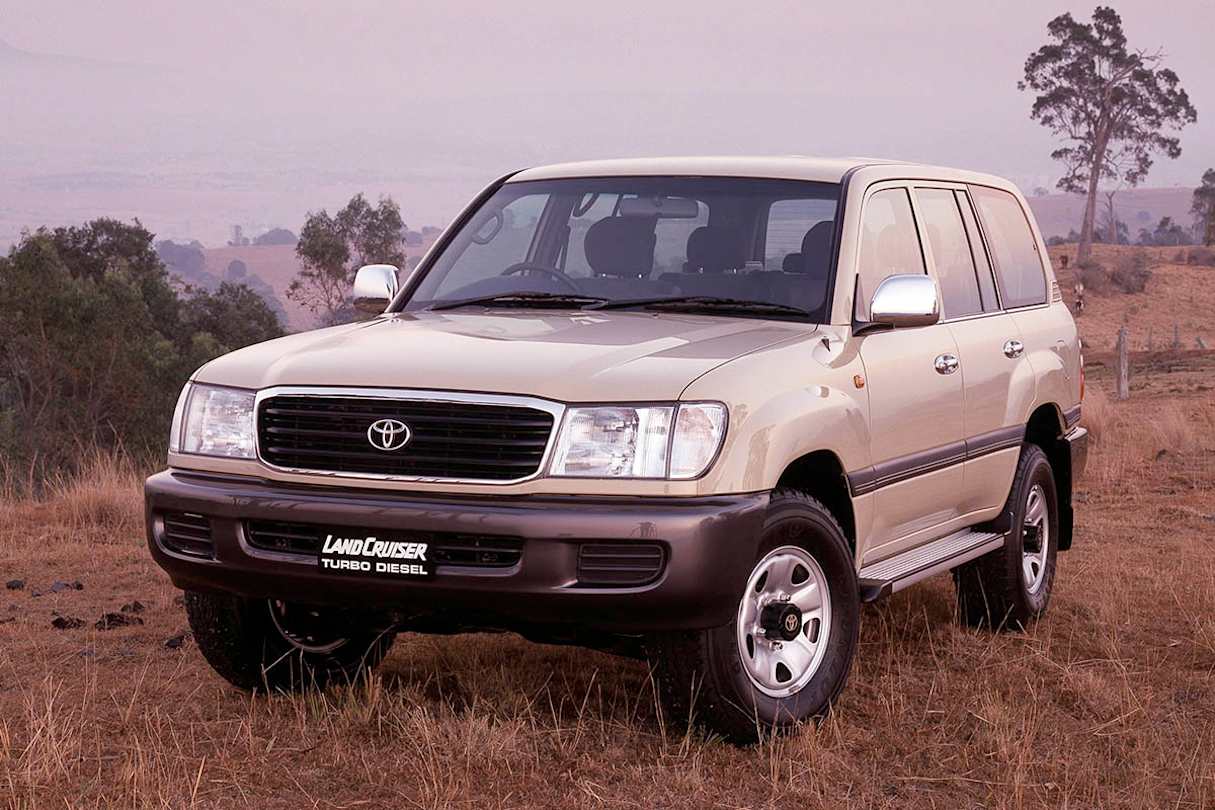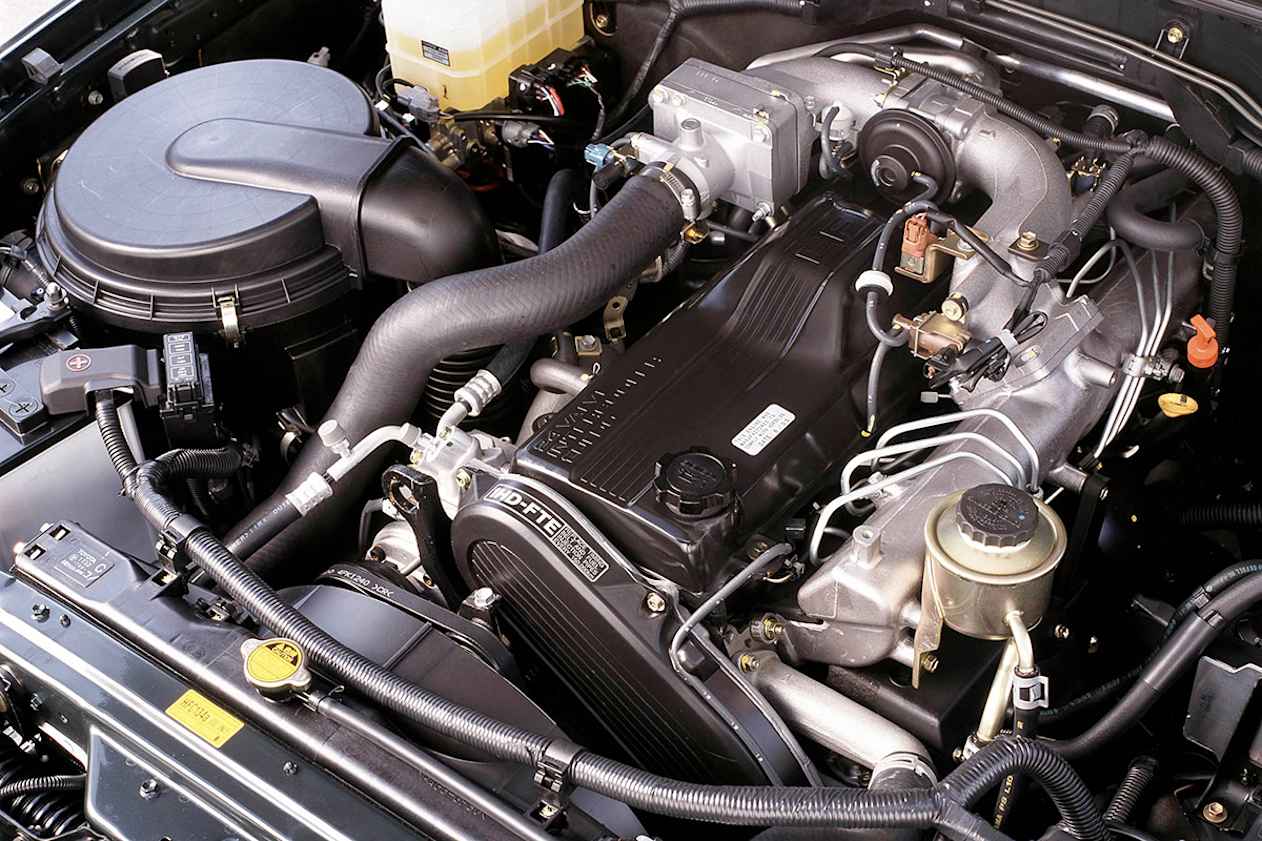Toyota 1HD-FTE – What is it?
A diesel engine makes all sorts of sense for a touring off-roader designed to tackle the worst of the Aussie outback. In a country where distances between service stations can be vast and conditions harsh, the toughness and relative fuel economy of a good diesel engine are deal-makers.
Toyota's four-valve-per-cylinder, electronically-injected 1HD-FTE was really the ultimate expression of six-cylinder diesel grunt and was only replaced by the V8 turbo-diesel that still powers current-model LandCruisers. The 1HD-FTE is still revered by many and thought to be a more reliable and easy-to-maintain engine than the newer V8. It's also a lot easier to package in the Cruiser's engine bay. But let's take a look at how it all happened.
In the world of Toyota four-wheel-drives, the turbo-diesel turned up in Australia in the 1980s with the 12HT in the 60 Series and soon made a name for itself. In fact, the 12HT remains one of the best loved Toyota oilers of all time and is a popular retrofit to older Cruisers getting a new lease on life.
But by the time the 80 Series LandCruiser arrived in showrooms in 1990, Toyota was chasing efficiency and smoothness and a shift from pushrods to overhead camshaft was taking place. The SOHC, normally-aspirated 1HZ led the charge in that department, but a requirement from recreational owners for more power and torque, led Toyota to also offer the 80 Series with a new family of turbo-diesels, starting with the 1HD-T.
With a displacement of 4.2 litres, a single overhead camshaft and two valves per cylinder, the turbocharged 1HD-T was good for 122kW of power at 3600rpm and 361Nm of torque at just 1400rpm, making it a proper stump-puller. It actually went very well but it ran in the 80 Series from the model's launch in 1990 to just 1992.
Why? Because the engine had its own problems, starting with surging and poor idling and, even more seriously, a propensity to destroy its bottom-end bearings. Many owners have found that the 1HD-T needs new bottom-end bearings every 100,000km or so, and even though mechanics have worked out a way to do it without removing the entire engine, it's still a big cost of ownership, not to mention a big drama if it happens in the bush. Besides, there was something better in the wings.
That was the 1HD-FT, which shared the earlier engine's undersquare (94mm bore, 100mm stroke) dimensions, but combined them with a new, four-valve-per-cylinder layout. The valves were still operated by a single overhead camshaft driven by a rubber toothed belt, but the glow-plugs (which heat the combustion chamber prior to a cold start) were replaced with a newer design of glow-mesh heater in the inlet manifold.
Available in the 80 Series from 1992 to the end of production in 1998, the 1HD-FT was good for 125kW at 3600rpm and 380Nm of torque at a controversial 2500rpm. Controversial? On the basis that the old 1HD-T had a peak torque at 1400rpm, leading to the view that the later engine needed to be revved harder to deliver; not something a diesel should need. The reality was a little different, and although the peak torque was at 2500rpm, by the time the 1HD-FT was off idle, it was also making plenty of Newton-metres, just not all 380.
Which brings us to the then-all-new 100 Series LandCruiser and the 1HD-FTE turbo-diesel engine. Interestingly, the new engine wasn't fitted to the 100 Series straight away when the 100 was launched in 1998, and it took another two years to get the 1HD-FTE into the Cruiser's engine bay. But when it arrived, it suddenly addressed all those earlier concerns about the 1HD-FT's lack of down-low torque and soft launch from idle.
The changes were mainly to do with the way the fuel was delivered and the fitment of a standard intercooler, something the earlier 1HD-FT simply didn't have. The intercooler itself was a simple air-to-air unit but it dropped intake temperatures significantly and enabled the engine to keep boosting and making power.
The injection side of things amounted to a change to electronic control of the injectors and a more sophisticated fuel-injection pump. Rather than rely on the old-school method of mechanical timing of the fuel pump to control the injectors, the 1HD-FTE used electronics to control the injector timing and the injection volumes by using sensors that measured the engine speed and throttle position and work things out from there.
So does that make the engine a common-rail diesel? No, it still uses a mechanical pump, but the difference is that the injector timing is electronically controlled. It still needed its maintenance, too, and as well as a timing belt every 150,000km, the 1HD-FTE needs fresh oil and an oil filter every 5000km. Be wary of any diesel Cruiser that hasn't been serviced strictly along these lines.

But the end result was an engine that was more efficient thanks to better control of the injectors, had fewer emissions for the same reasons and made more power and torque over a greater rev range and with improved overall drivability. The bottom line was 151kW at 3400rpm and 430Nm anywhere from 1400 to 3200rpm, all set against a 4000rpm redline.
Downsides? Not many, but traditionalists at the time pointed to the added electronics, suggesting the silicon chip was fundamentally incompatible with serious off-roading. With the passage of time, of course, those fears seem to have been pretty well unfounded and the 1HD-FTE has earned a posse of hardcore fans who rate the engine above even the more modern 4.5-litre turbo-diesel V8 that replaced the six-cylinder.
And just to show how confident Toyota was in the engine, from 2002, it was also offered in the workhorse 70 Series vehicles, albeit without the intercooler and with slightly less peak power. And you can bet that if farmers and the mining industry couldn't kill the 1HD-FTE, neither will anybody else.

.jpg)

.jpg)


.jpg)



.jpg)



.jpg)
.jpg)
.jpg)
.jpg)
.jpg)



.jpg)

